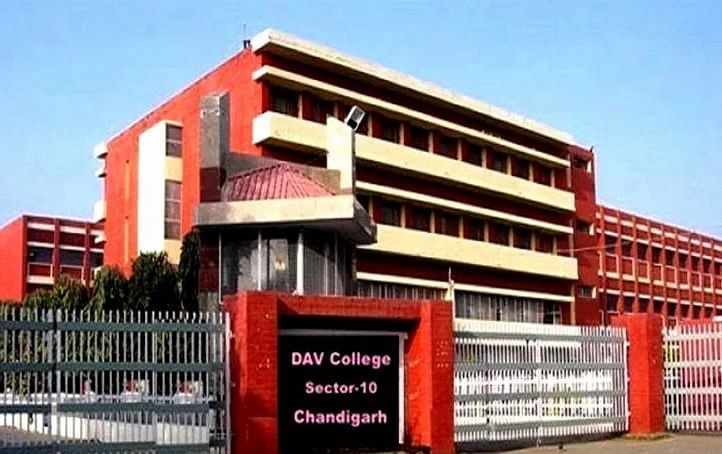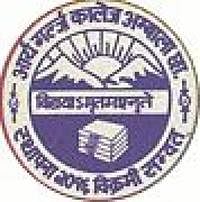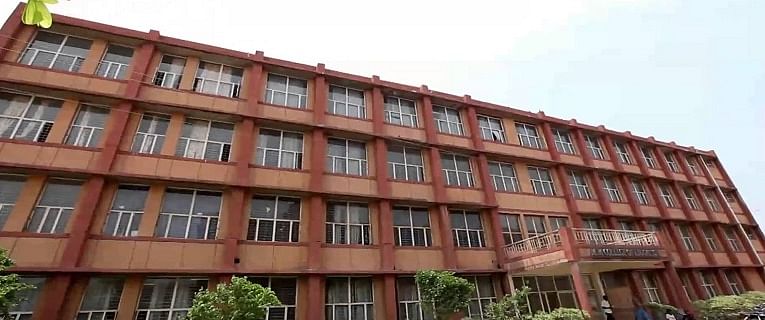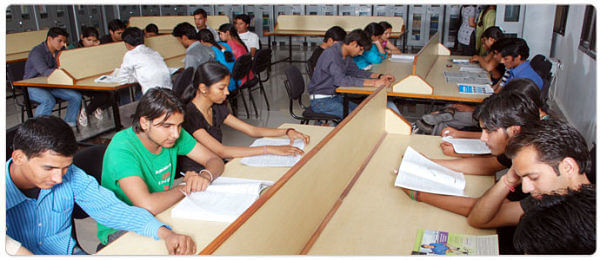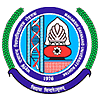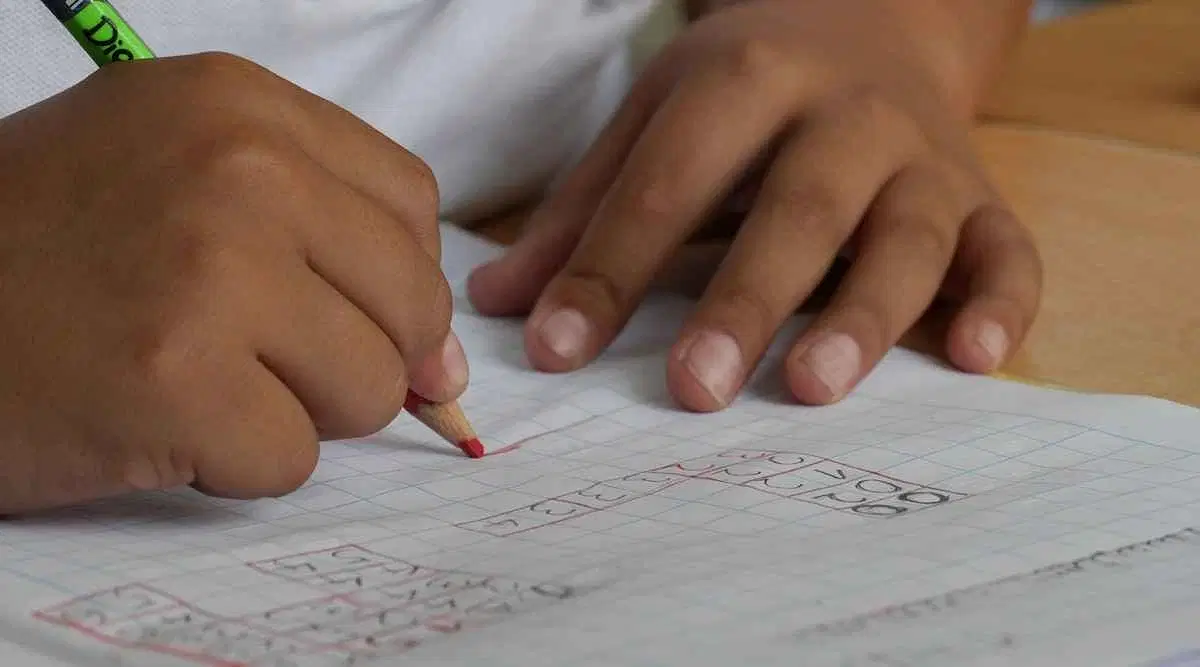HBSE Class 12 Mathematics Latest Syllabus 2024-25: Download Latest and Revised HBSE Class 12th Mathematics Syllabus PDF
Table of Contents
- HBSE Class 12th Mathematics Syllabus
- HBSE Class 12th Mathematics Syllabus: PDF Download
- How to Download HBSE Class 12th Mathematics Syllabus
- HBSE Class 12th Mathematics Syllabus: Question Paper Design
- Best Books for HBSE Class 12th Mathematics Syllabus
- Preparation Tips for HBSE Class 12th Mathematics Syllabus
The Board of School Education, Haryana, has published the HBSE Class 12 Mathematics Syllabus for the students on the official website. This syllabus includes a detailed course outline, question paper design, and a list of prescribed books that will help the students prepare well.
The syllabus of mathematics includes important topics like relations and functions, inverse trigonometric functions, matrices, determinants, and Applications of derivatives and integrals.
The Annual Examination will be based on the whole syllabus, carrying 80 marks. In addition to this, 20 marks will be allocated for Internal Assessment. This assessment consists of SAT and Pre-Board exams, a half-yearly test, classroom participation, project work, and attendance.
For more details on the HBSE Class 12th Mathematics Syllabus, candidates can check below:
Also Read: HBSE Class 12th exam 2025
HBSE Class 12th Mathematics Syllabus
HBSE Class 12th Mathematics Syllabus can be checked below:
|
Chapter |
Sub-Topics |
Marks |
|
Chapter 1: Relations and Functions |
1.1: Introduction 1.2 Types of Relations: Empty Relation, Universal Relation, Reflexive Relation, Symmetric Relation, Transitive Relation, Equivalence Relation 1.3 Types of Functions: Injective Function, Surjective Function, Bijective Function 1.4: Composition of Functions and Invertible Function: fog , gof , Invertible Function definition
|
8 |
|
Chapter 2: Inverse Trigonometric Functions |
2.1 Introduction 2.2 Basic Concepts: Domain, Range ,Graphs and Principal value of Trigonometric Functions 2.3 Properties of Inverse Trigonometric Functions: Related to sin(sin1x) = x, x € [-1,1] and sin-1 (sin x) = x , x € [-π/2,π/2] ,Conversion of some trigonometric functions in their simplest forms using trigonometric properties. |
|
|
Chapter 3: Matrices |
3.1 Introduction 3.2 Matrix: Definition and Order of a matrix. 3.3 Types of Matrices : Column Matrix ,Row Matrix , Square Matrix ,Diagonal Matrix , Scalar Matrix , Identity Matrix ,Zero Matrix 3.3.1 Equality of Matrices 3.4 Operations on Matrices : Addition of matrices, Multiplication of a matrix by a scalar, Properties of matrix addition ,Properties of scalar multiplication of a matrix , Multiplication of matrices ,Properties of multiplication of matrices 3.5 Transpose of a Matrix : Properties of transpose of the matrices 3.6 Symmetric and Skew Symmetric Matrices 3.7 Invertible Matrices : Definition of invertible matrix , Uniqueness of Inverse (Theorem and its applications) |
13 |
|
Chapter 4: Determinants |
4.1 Introduction 4.2 Determinant: Determinants of matrices of order one, two and three 4.3 Area of a Triangle 4.4 Minors and Cofactors 4.5 Adjoint and Inverse of a Matrix 4.6 Applications of Determinants and Matrices: Solution of system of linear equations using inverse of a matrix |
|
|
Chapter 5: Continuity and Differentiability |
5.1 Introduction 5.2 Continuity: Definition of continuity , Algebra of continuous functions 5.3 Differentiability: Derivatives of composite functions , Chain Rule, Derivatives of implicit functions, Derivatives of inverse trigonometric functions 5.4 Exponential and Logarithmic Functions 5.5 Logarithmic Differentiation 5.6 Derivatives of Functions in Parametric Forms 5.7 Second Order Derivative |
14 |
|
Chapter 6: Application of Derivatives |
6.1 Introduction 6.2 Rate of change of Quantities 6.3 Increasing and Decreasing Functions 6.4 Maxima and Minima : Local Maxima , Local Minima , First Derivative Test, Second Derivative Test , Maximum and Minimum Values of a Function in a closed Interval ,Absolute Maximum, Absolute Minimum |
|
|
Chapter 7: Integrals |
7.1 Introduction 7.2 Integration as an Inverse Process of Differentiation : Some properties of indefinite integral 7.3 Methods of Integration : Integration by Substitution, Integration using Trigonometric Identities 7.4 Integrals of Some Particular Functions 7.5 Integration by Partial Fractions 7.6 Integration by Parts: Integral of the type ∫ ex [ f (x)+f1 (x) ] dx , Integrals of some more types 7.7 Definite Integral 7.8 Fundamental Theorem of Calculus : Area function and related numerical problems 7.9 Evaluation of Definite Integrals by Substitution 7.10 Some properties of Definite Integrals and Related Problems |
19 |
|
Chapter 8: Application of Integrals |
8.1 Introduction 8.2 Area under Simple Curves Using Definite Integrals |
|
|
Chapter 9: Differential Equations |
9.1 Introduction 9.2 Basic Concepts :Order and Degree of a Differential Equation 9.3 General and Particular Solutions of a Differential Equation 9.4 Methods of Solving First Order ,First Degree Differential Equations: Differential Equations with variables separable, Homogeneous Differential Equations , Linear Differential Equations |
|
|
Chapter 10: Vector Algebra |
10.1 Introduction 10.2 Some Basic Concepts : Definition of Vector ,Position Vector , Direction Cosines 10.3 Types of Vectors : Zero Vector, Unit Vector , Coinitial Vector , Collinear Vector , Equal Vectors ,Negative of a Vector. 10.4 Addition of Vectors 10.5 Multiplication of a vector by a Scalar : Components of a Vector, Vector joining Two Points , Section Formula 10.6 Product of Two Vectors : Scalar (or dot) Product of Two Vectors, Projection of a Vector on a line ,Vector ( or cross ) product of Two Vectors |
12 |
|
Chapter 11: Three Dimensional Geometry |
11.1 Introduction 11.2 Direction Cosines and Direction Ratios of a Line : Direction cosines of a line passing through two points 11.3 Equation of a Line in Space : Equation of a Line through a given point and parallel to a given vector. 11.4 Angle between two Lines 11.5 Shortest Distance between Two Lines : Distance between two skew lines, Distance between two parallel lines
|
|
|
Chapter 12: Linear Programming |
12.1 Introduction 12.2 Linear Programming Problem and its Mathematical Formation: Mathematical Formulation of the Problem , Graphical Method of solving Linear Programming Problems |
5 |
|
Chapter 13: Probability |
13.1 Introduction 13.2 Condition Probability : Properties of conditional probability 13.3 Multiplication Theorem on Probability 13.4 Independent Events 13.5 Bayes’ Theorem and Related Problems:Partition of a sample space, Theorem of total probability |
9 |
HBSE Class 12th Mathematics Syllabus: PDF Download
Candidates can click on the link given below to download HBSE Class 12th Mathematics Syllabus PDF:
Also Read: HBSE class 12 syllabus
How to Download HBSE Class 12th Mathematics Syllabus
Given below is the step by step process on how to download HBSE Class 12th Mathematics Syllabus from the official website:
- Visit the HBSE Official Website: Go to bseh.org.in
- Navigate to the Quick Links Section on the Left
- Look for the "Academic Session 2024 -2025 Curriculum (9th to 12th)" section and Click on it.
- Next select Class 12 from the dropdown options.
- Now Click on the option 12th Class: Syllabus with Question Paper Design 2024-25
- Next Look for the Mathematics syllabus and click on it.
- Download the Syllabus for Future Reference
HBSE Class 12th Mathematics Syllabus: Question Paper Design
Table 1: HBSE Class 12th Mathematics: Question Paper Design
|
Competencies |
Percentage |
Marks |
|
Knowledge |
40% |
32 |
|
Understanding |
30% |
24 |
|
Application |
20% |
16 |
|
Skill |
10% |
08 |
|
Total |
100% |
80 |
Table 2: HBSE Class 12th Mathematics: Question Paper Design
|
Type of Question |
Marks |
Number |
Description |
Total Marks |
|
Objective Questions |
1 |
20 |
12 MCQs, 3 one-word answers, 3 fill in the blanks, 2 assertion-reason questions. Internal choice in two questions. |
20 |
|
Very Short Answer Type Questions |
2 |
5 |
Internal choice will be given in any two questions. |
10 |
|
Short Answer Type Questions |
2 |
6 |
Internal choice will be given in any two questions. One question will be of High Order Thinking Skill (HOTS) / Competency Based Question (CBC) |
18 |
|
Long Answer Type Questions |
5 |
4 |
Internal choice will be given in any two questions. |
20 |
|
Source-Based Questions |
4 |
3 |
3 Source based /case based/ passage based /integrated units of assessment 4 marks each |
12 |
|
Total |
38 |
80 |
Best Books for HBSE Class 12th Mathematics Syllabus
Candidates can check out the list of Prescribed books for HBSE Class 12th Mathematics Syllabus:
|
Prescribed Books for HBSE Class 12th Mathematics |
|
1. Textbook for class 12th : Mathematics Part-1, NCERT- Latest Edition Mathematics Part-2, NCERT- Latest Edition |
|
2. Exemplar Problems: Mathematics - Class XII (NCERT) |
Additionally students can also prepare a notebook to note down all the Terminology/Definitional Words used in the chapters for enhancement of vocabulary or clarity of the concept.
Also Read: HBSE 12th sample papers 2025
Preparation Tips for HBSE Class 12th Mathematics Syllabus
- Students should make sure to first understand the syllabus. Read each chapter and understand what carries heavy weightage like Integrals, Application of Integrals and Differential Equations
- Use NCERT Class 12 Mathematics texts and Exemplar problems for practice. Both of them are good books to learn as well as to practice at the exam-oriented level.
- Mathematics requires regular practice, especially for topics like Inverse Trigonometric Functions. The better way to retain the concepts is by solving questions every day.
- Objective questions are given a high weightage of 20 Marks in the question paper design, so practice MCQs, assertion-reasoning, and short answer questions from each chapter.
- You should also write down important formulas, theorems, and terminology from each chapter in a notebook. This notebook can be a quick revision tool before exams.
- Solve previous years' question papers to get an idea of the question pattern. It will improve your speed and identify areas that need more practice.
FAQs on HBSE 12th Mathematics
Q: How many chapters are there in HBSE Class 12th Mathematics syllabus?
Q: What are the Prescribed Books for HBSE Class 12th Mathematics?
Q: What is the pattern of the HBSE Class 12th Mathematics?
Q: What is the syllabus of HBSE Class 12th Mathematics?


